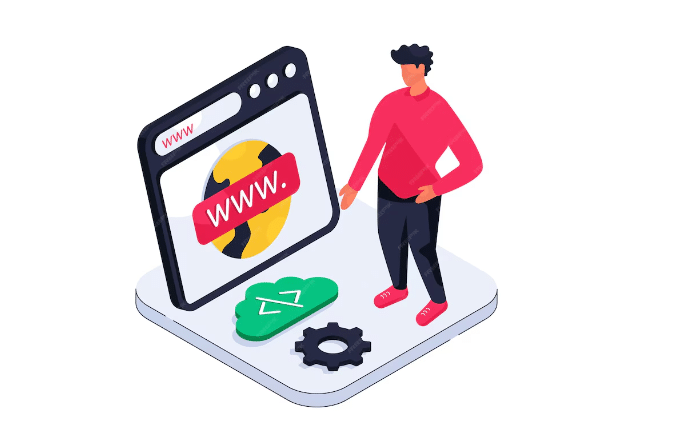The Role of Progressive Web Apps in Shaping Mobile Development’s Future
In the fast-paced world of technology, Progressive Web Apps (PWAs) are emerging as a game-changer in mobile development. They combine the best of both web and mobile app experiences, delivering seamless functionality, improved performance, and offline capabilities. As businesses and developers seek efficient ways to enhance user experiences without compromising on speed or cost, PWAs stand out as a revolutionary solution. In this article, we’ll explore how PWAs are shaping the future of mobile development and why they could be the next big leap for both developers and users.
Join the conversation! Subscribe to OptimistDev Herald for our take. Click Here
What Are Progressive Web Apps?
Progressive Web Apps are web applications that behave like native mobile apps. Unlike traditional apps that require installation through an app store, PWAs can be accessed directly through a browser, yet offer features commonly found in native apps. Key characteristics of PWAs include:
- Responsive Design: PWAs work on all devices, from desktops to smartphones, adjusting to various screen sizes.
- Offline Functionality: Thanks to service workers, PWAs can load content and remain functional even when offline.
- App-like Interface: PWAs offer a sleek, fast, and interactive user experience that mimics native apps.
- No Need for App Stores: Users can “install” PWAs directly from their browser without visiting an app store.
PWAs bridge the gap between mobile web and native apps, offering a more streamlined development process while ensuring excellent user experiences.
Why Are PWAs Important in Mobile Development?
1. Cost-Effective Development
Developing a native app requires creating separate versions for iOS and Android, which can be time-consuming and expensive. Progressive Web Apps eliminate this issue by using a single codebase, allowing developers to deploy across multiple platforms simultaneously. This reduces the development cycle and lowers costs.
- Cross-Platform Compatibility: PWAs work on any platform with a web browser, eliminating the need for multiple versions.
- Reduced Maintenance: Instead of managing updates and fixes for both iOS and Android apps, developers can maintain one PWA, simplifying the process.
2. Improved Performance and Speed
PWAs are optimized for speed. They can load content faster, especially under poor network conditions, thanks to caching mechanisms enabled by service workers. Users can experience rapid interactions without the need for a constant internet connection, which is critical in regions with unreliable network access.
- Offline Access: A PWA can load cached content even when offline, keeping users engaged.
- Instant Loading: Since PWAs don’t need to be downloaded from an app store, they reduce initial friction, leading to better user retention.
3. Enhanced User Engagement
User engagement is key to app success. PWAs offer features like push notifications, which can re-engage users by delivering timely updates. The ability to add PWAs to a device’s home screen provides quick access, making them feel like native apps.
- Push Notifications: PWAs can send alerts, increasing user retention and encouraging continued app usage.
- Installable: Users can install PWAs directly from the browser, which adds convenience without the need for app store downloads.
4. SEO and Discoverability
Traditional native apps often suffer from limited visibility unless promoted through app stores. In contrast, Progressive Web Apps are indexable by search engines, giving them a significant advantage in terms of discoverability. PWAs follow standard SEO practices, ensuring they can be easily found through organic search.
- Search Engine Indexing: PWAs are indexed like web pages, meaning they can rank on search engine results, driving organic traffic.
- Lightweight: Unlike native apps that take up significant storage space, PWAs consume minimal space, increasing the likelihood that users will “install” them.
Real-World Success Stories with PWAs
Several major companies have already embraced PWAs and reaped the rewards:
- Twitter Lite: Twitter introduced a PWA to address slow loading times and improve user experience on mobile devices. As a result, they saw a 65% increase in pages per session and a 75% increase in Tweets sent.
- Starbucks: Starbucks created a PWA for their ordering system that works even on low-bandwidth connections. The PWA is only 233KB, making it 99.84% smaller than their native app and accessible to a wider audience.
- Alibaba: By launching a PWA, Alibaba experienced a 76% increase in conversions, demonstrating how impactful PWAs can be for eCommerce businesses.
The Future of Mobile Development with PWAs
The mobile landscape is continuously evolving, and PWAs are at the forefront of this transformation. Here’s how PWAs are likely to shape the future of mobile development:
1. Replacing Native Apps for Certain Use Cases
For businesses that need a lightweight, fast, and accessible app, PWAs could completely replace native apps. They are ideal for eCommerce sites, news platforms, and content-driven apps where performance and accessibility are paramount.
2. Broader Adoption Across Industries
As the demand for fast and flexible apps grows, industries like retail, education, and entertainment are expected to adopt PWAs widely. The ability to deliver reliable, engaging experiences on both mobile and desktop could lead to broader adoption across various sectors.
3. Enhanced Web Standards and APIs
The web continues to evolve, with new APIs and features being added that can enhance PWAs further. We can expect more capabilities such as deeper device integrations, enhanced offline functionality, and advanced graphics rendering that will make PWAs even more competitive with native apps.
4. Bridging the Digital Divide
PWAs, with their lightweight architecture and offline capabilities, can play a crucial role in bridging the digital divide. In regions with limited internet infrastructure, PWAs provide access to vital services without the need for constant connectivity, making them a powerful tool for global inclusivity.
Conclusion
Progressive Web Apps are not just a trend—they are redefining how we approach mobile development. By offering the speed, engagement, and reliability of native apps without the constraints of app stores, PWAs present a versatile and scalable solution for businesses of all sizes. As web technology continues to advance, it’s clear that PWAs will play a central role in the future of mobile development, making apps faster, more accessible, and easier to maintain. For developers and businesses looking to stay ahead, investing in PWAs is a step towards future-proofing mobile strategies.
Embrace the future with PWAs, and experience a seamless blend of web and app development!
Seeking a Website Developer for your business. We’re here to seamlessly transition your business into the digital world with tailored expertise. Elevate your online presence with us



